Transcription of Log Linear Models - San Francisco State University
1 loglinear Models Angela Jeansonne This page last updated Brief History Until the late 1960 s, contingency tables - two-way tables formed by cross classifying categorical variables - were typically analyzed by calculating chi-square values testing the hypothesis of independence. When tables consisted of more than two variables, researchers would compute the chi-squares for two-way tables and then again for multiple sub-tables formed from them in order to determine if associations and/or interactions were taking place among the variables. In the 1970 s the analysis of cross-classified data changed quite dramatically with the publication of a series of papers on loglinear Models by Goodman.
2 Many other books appeared around that time building on Goodman s work (Bishop, Finberg & Holland 1975; Haberman 1975). Now researchers were introduced to a wide variety of Models that could be fitted to cross-classified data. Thus, the introduction of the loglinear model provided them with a formal and rigorous method for selecting a model or Models for describing associations between variables. Overview When to use loglinear Models : The loglinear model is one of the specialized cases of generalized Linear Models for Poisson-distributed data. loglinear analysis is an extension of the two-way contingency table where the conditional relationship between two or more discrete, categorical variables is analyzed by taking the natural logarithm of the cell frequencies within a contingency table.
3 Although loglinear Models can be used to analyze the relationship between two categorical variables (two-way contingency tables), they are more commonly used to evaluate multiway contingency tables that involve three or more variables. The variables investigated by log Linear Models are all treated as response variables . In other words, no distinction is made between independent and dependent variables. Therefore, loglinear Models only demonstrate association between variables. If one or more variables are treated as explicitly dependent and others as independent, then logit or logistic regression should be used instead. Also, if the variables being investigated are continuous and cannot be broken down into discrete categories, logit or logistic regression would again be the appropriate analysis.
4 For a complete discussion on logit and logistic regression consult Agresti (1996) or Tabachnick and Fidell (1996). Example of data appropriate for loglinear Models : Suppose we are interested in the relationship between sex, heart disease and body weight. We could take a sample of 200 subjects and determine the sex, approximate body weight, and who does and does not have heart disease. The continuous variable, body weight, is broken down into two discrete categories: not over weight, and over weight. The contingency table containing the data may look like this: Heart Disease Total Body Weight Sex Yes No Not over weight Male 15 5 20 Female 40 60 100 Total 55 65 120 Over weight Male 20 10 30 Female 10 40 50 Total 30 50 80 In this example, if we had designated heart disease as the dependent variable and sex and body weight as the independent variables, then logit or logistic regression would have been the appropriate analysis.
5 Basic Strategy and Key Concepts: The basic strategy in loglinear modeling involves fitting Models to the observed frequencies in the cross-tabulation of categoric variables. The Models can then be represented by a set of expected frequencies that may or may not resemble the observed frequencies. Models will vary in terms of the marginals they fit, and can be described in terms of the constraints they place on the associations or interactions that are present in the data. The pattern of association among variables can be described by a set of odds and by one or more odds ratios derived from them. Once expected frequencies are obtained, we then compare Models that are hierarchical to one another and choose a preferred model , which is the most parsimonious model that fits the data.
6 It s important to note that a model is not chosen if it bears no resemblance to the observed data. The choice of a preferred model is typically based on a formal comparison of goodness-of-fit statistics associated with Models that are related hierarchically ( Models containing higher order terms also implicitly include all lower order terms). Ultimately, the preferred model should distinguish between the pattern of the variables in the data and sampling variability, thus providing a defensible interpretation. The loglinear model The following model refers to the traditional chi-square test where two variables, each with two levels (2 x 2 table), are evaluated to see if an association exists between the variables.
7 Ln(Fij) = + iA + jB + ijAB Ln(Fij) = is the log of the expected cell frequency of the cases for cell ij in the contingency table. = is the overall mean of the natural log of the expected frequencies = terms each represent effects which the variables have on the cell frequencies A and B = the variables i and j = refer to the categories within the variables Therefore: iA = the main effect for variable A jB = the main effect for variable B ijAB = the interaction effect for variables A and B The above model is considered a Saturated model because it includes all possible one-way and two-way effects. Given that the saturated model has the same amount of cells in the contingency table as it does effects, the expected cell frequencies will always exactly match the observed frequencies, with no degrees of freedom remaining (Knoke and Burke, 1980).
8 For example, in a 2 x 2 table there are four cells and in a saturated model involving two variables there are four effects, , iA, jB, ijAB , therefore the expected cell frequencies will exactly match the observed frequencies. Thus, in order to find a more parsimonious model that will isolate the effects best demonstrating the data patterns, a non-saturated model must be sought. This can be achieved by setting some of the effect parameters to zero. For instance, if we set the effects parameter ijAB to zero ( we assume that variable A has no effect on variable B, or vice versa) we are left with the unsaturated model . Ln(Fij) = + iA + jB This particular unsaturated model is titled the Independence model because it lacks an interaction effect parameter between A and B.
9 Implicitly, this model holds that the variables are unassociated. Note that the independence model is analogous to the chi-square analysis, testing the hypothesis of independence. Hierarchical Approach to loglinear Modeling The following equation represents a 2 x 2 x 2 multiway contingency table with three variables, each with two levels exactly like the table illustrated on page 1 of this article. Here, this equation is being used to illustrate the hierarchical approach to loglinear modeling. Ln(Fij) = + iA + jB + kC + ijAB + ikAC + jkBC + ijkABC A hierarchy of Models exists whenever a complex multivariate relationship present in the data necessitates inclusion of less complex interrelationships (Knoke and Burke, 1980).
10 For example, in the above equation if a three-way interaction is present (ABC), the equation for the model must also include all two-way effects (AB, AC, BC) as well as the single variable effects (A, B, C) and the grand mean ( ). In other words, less complex Models are nested within the higher-order model (ABC). Note the shorter notation used here to describe Models . Each set of letters within the braces indicates a highest order effect parameter included in the model and by virtue of the hierarchical requirement, the set of letters within braces also reveals all lower order relationships which are necessarily present (Knoke and Burke, 1980). SPSS uses this model to generate the most parsimonious model ; however, some programs use a non-hierarchical approach to loglinear modeling.
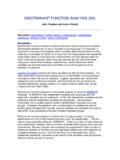


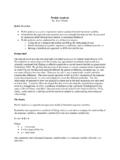

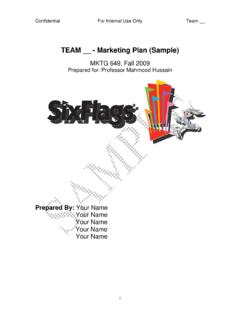

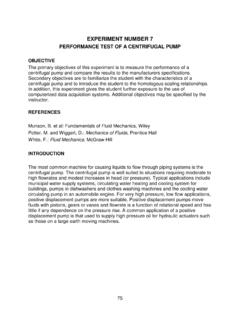



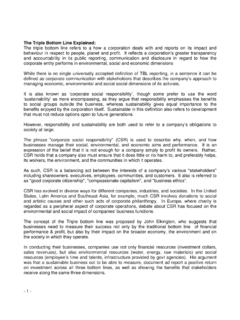




![[Angela Pearman] [Martin Place Chambers]](/cache/preview/1/1/8/4/4/3/d/0/thumb-118443d00252905dfdf47c90c3a5a550.jpg)

